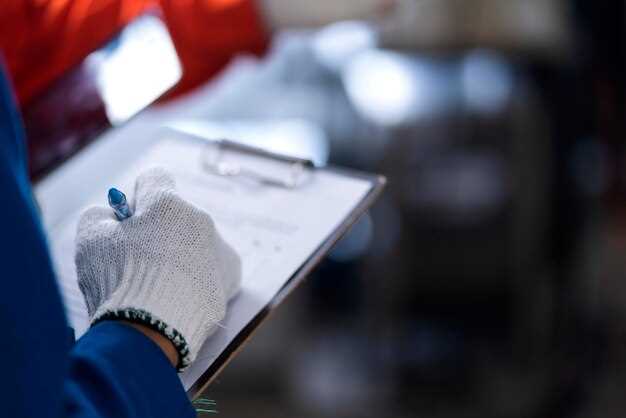
When it comes to racing, the importance of a thorough pre-race inspection can’t be overstated. A well-structured checklist serves as a crucial tool to ensure that every aspect of your vehicle is in optimal condition before hitting the track. By adhering to these essential prep steps, you can enhance safety, boost performance, and avoid potential pitfalls that could hinder your success on race day.
Creating an effective checklist begins with identifying critical components of your vehicle, including tires, brakes, and engine fluids. Each item on your prep list should be meticulously examined for any signs of wear or malfunction. This proactive approach not only minimizes the risk of mechanical failures during the race but also instills confidence in your equipment, allowing you to focus on your performance.
In addition to mechanical checks, it’s vital to include personal gear and safety equipment in your checklist. Reviewing your safety suit, helmet, and harness ensures you are fully prepared for the race ahead. Integrating both vehicle and personal inspections into a cohesive prep routine can significantly elevate your readiness and peace of mind as you approach the starting line.
Key Equipment Checks for Optimal Race Readiness

Preparation for a race involves more than just mental focus and physical training; it is essential to conduct a thorough equipment inspection. Utilizing a checklist can help ensure that no critical component is overlooked. Here are key checks to perform:
1. Tires: Verify that your tires are in optimal condition. Look for proper inflation, tread wear, and any signs of damage. Maintaining the correct pressure can significantly improve performance and reduce the risk of tire failure during the race.
2. Brakes: Ensure your brake pads are sufficiently thick and functioning correctly. Test the brake levers for responsiveness and listen for any unusual noises when engaged. Properly functioning brakes are crucial for safety during high-speed racing.
3. Chain and Gearing: Check your bike’s chain for lubrication and wear. A clean and well-lubricated chain will enhance gear shifting and overall efficiency. Additionally, inspect all gears to ensure smooth operation without skipping or grinding.
4. Frame Integrity: Examine the frame of your bike for any cracks or signs of fatigue. A compromised frame can lead to significant safety concerns and performance issues during a race. A thorough visual inspection is necessary to identify potential problems.
5. Helmet and Protective Gear: Inspect your helmet for any visible damage, and ensure it fits securely and comfortably. Additionally, check all protective gear, such as pads and gloves, for integrity and comfort. Safety should always be a priority.
6. Hydration System: Ensure that your hydration system is functional and clean. Inspect the hose and reservoir for leaks or clogs, and check that all parts are securely attached. Staying hydrated is crucial for optimal performance during a race.
7. Accessories: Don’t forget to verify the functionality of any additional accessories, such as lights, bells, or GPS units. Make sure batteries are charged, and all components are securely mounted. These items can impact your overall race experience.
Implementing this checklist in your race prep will promote confidence and readiness as you take on the challenge ahead. Ensuring that every piece of equipment is in top condition will contribute significantly to your success on race day.
Essential Safety Protocols to Ensure a Smooth Race Experience

Preparing for a race involves a detailed checklist to guarantee safety for all participants. Start with a thorough inspection of the racecourse, ensuring that all hazards are clearly marked. This includes potholes, sharp turns, and any potential obstacles on the track. Regularly update the checklist to reflect any changes in the course conditions.
Verify that all safety equipment is in working order, including traffic cones, barriers, and signage. This helps maintain a safe environment for racers and spectators alike. Additionally, ensure that adequate medical support is available at key points along the course, and that staff are trained to respond to emergencies promptly.
Communication is vital. Establish clear channels for race officials to convey important information during the event. Equip officials with walkie-talkies or headsets to streamline communication. This ensures that any issues can be addressed quickly, maintaining the flow of the race.
Conduct a briefing for all participants to go over safety protocols and race rules. This prepares racers for what to expect and reinforces the importance of adhering to guidelines throughout the event. Encourage racers to perform their own equipment checks, as personal safety gear can greatly affect race performance.
Implement a systematic approach to crowd control. Designate areas for spectators that minimize interference with the race. Use volunteers to guide the public and ensure they remain at a safe distance from the course. This helps prevent accidents and allows racers to focus on their performance.
By following these safety protocols and utilizing a comprehensive checklist, race organizers can ensure a smooth and successful experience for everyone involved. Prioritizing safety leads to a more enjoyable race, ultimately enhancing the overall atmosphere of the event.
Last-Minute Preparations to Maximize Performance Potential
As race day approaches, final prep steps are crucial for ensuring you perform at your best. Begin by double-checking your gear and equipment. Ensure your shoes are comfortable and well-fitted, and that your race kit includes all necessary items like your bib number, gels, and hydration plans. A thorough inspection of your bike or running gear will help prevent any mechanical issues during the race.
Next, focus on your nutrition strategy. In the hours leading up to the race, consume a light meal that balances carbohydrates and proteins, avoiding heavy foods that could cause discomfort. Hydrate adequately, but don’t overdo it to prevent bathroom breaks during the race. Experiment with your fueling strategy during training to determine what works best for your body.
Another vital prep step is mental readiness. Visualize your race from start to finish, and keep a positive mindset. Consider practicing breathing exercises to calm nerves and enhance focus. Remember to create a race day schedule that outlines your arrival time, warm-up routine, and when you’ll be at the start line. This will eliminate last-minute stress and allow you to concentrate on your performance.
Lastly, ensure you are well-rested. Prioritize sleep in the days leading up to the race. A well-rested mind and body contribute significantly to enhanced performance. Consider a light activity or stretch to maintain mobility without overexerting yourself. These last-minute preparations will set the stage for a successful race, helping you to maximize your performance potential.




